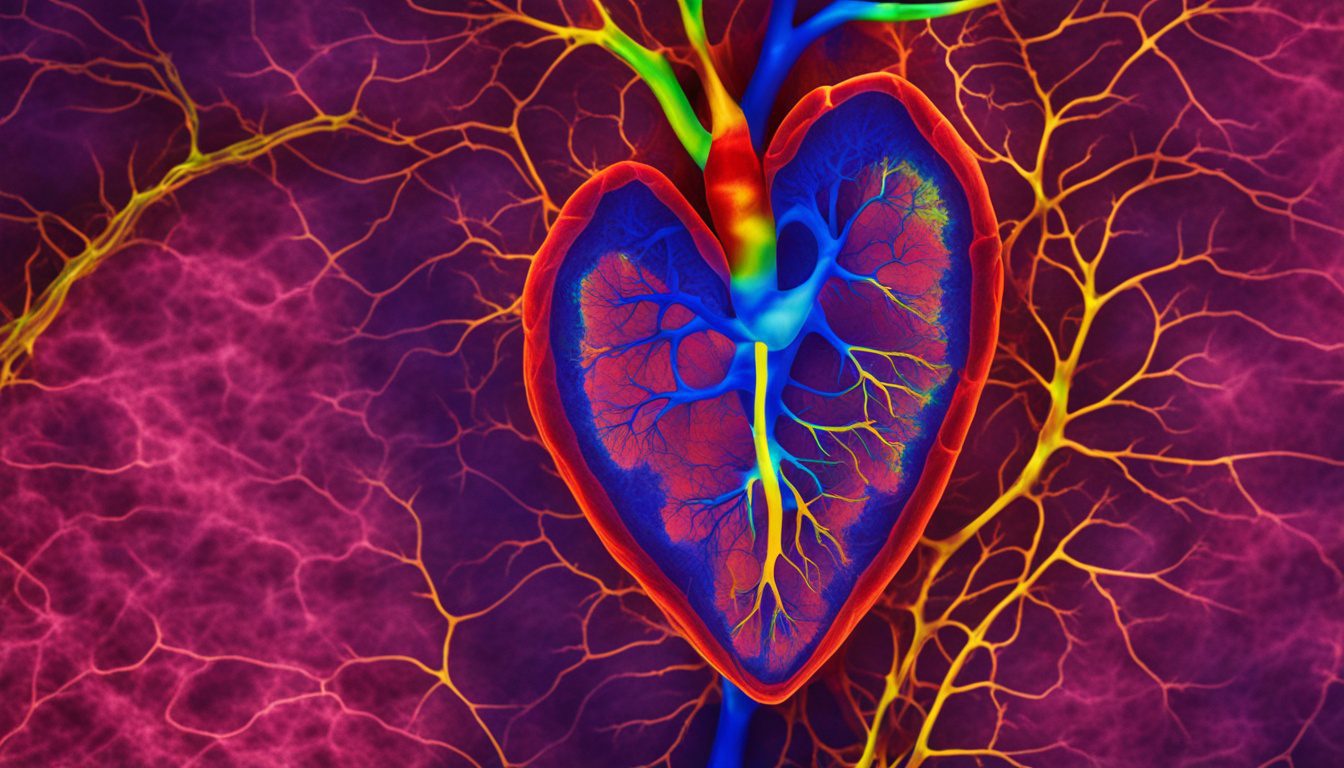Truncus arteriosus is rare, affecting the heart at birth. It is marked by a single big artery from the heart. This differs from the usual two, the pulmonary and aorta.
This condition starts early in the womb, affecting how the heart and blood vessels grow. Its signs include a bluish skin color, trouble breathing, eating poorly, and slow growth. The cause is a mix of genetic and outside influences.
Doctors spot truncus arteriosus often before birth, using ultrasound. After delivery, tests like echocardiography help confirm it. Fixing it needs surgery to make new pulmonary arteries and close a hole in the heart.
Stem cell research is advancing as a possible new way to treat this heart problem. It aims to repair heart damage, giving hope to people with truncus arteriosus.
Key Takeaways:
- Truncus arteriosus is a rare congenital heart defect characterized by a single arterial trunk arising from the heart.
- Common symptoms include cyanosis, breathing difficulties, poor feeding, and failure to thrive.
- Diagnosis is typically made through imaging tests, such as echocardiography and cardiac catheterization.
- Surgical repair is the primary treatment option, involving reconstruction of the pulmonary arteries and closure of the ventricular septal defect.
- Advances in stem cell therapy hold promise for regenerating damaged heart tissues.
Image: Heart scan showing the single arterial trunk associated with truncus arteriosus.
Causes and Diagnosis of Truncus Arteriosus
Truncus arteriosus is present at birth. It affects the heart and blood vessels’ normal growth. The exact cause isn’t fully known, but genetics and the environment may play a part. It’s sometimes linked to genetic problems like DiGeorge syndrome or chromosome issues.
Doctors often find truncus arteriosus during an ultrasound while the baby is still in the womb. They see a single trunk from the heart. This helps spot the problem early. After birth, tests like echocardiography and cardiac catheterization are used. These show detailed heart images. They help doctors confirm the problem and see how bad it is.
Finding truncus arteriosus early is key. It allows for prompt care and treatment. Knowing the causes and using modern tests, doctors can create custom treatment plans. This is vital for babies with this heart condition.
Advances in Stem Cell Therapy for Truncus Arteriosus
Researchers are looking into stem cell therapy to treat congenital heart problems like truncus arteriosus. Stem cells can repair damaged tissue and help grow new blood vessels. This ability makes them a hopeful solution for those with heart issues.
Studies show stem cells from sources such as bone marrow and umbilical cord blood can become heart cells. They can also help the heart heal. These breakthroughs are leading to new treatments for truncus arteriosus.
One method is to put stem cells right into the heart to encourage healing. Another way is to use special heart patches made from stem cells. These patches help the heart function better and can heal damaged areas. While these treatments are not common yet, they offer hope for better health and a stronger life for people with this heart defect. More study is needed to make sure this therapy is safe and effective in the long run.

